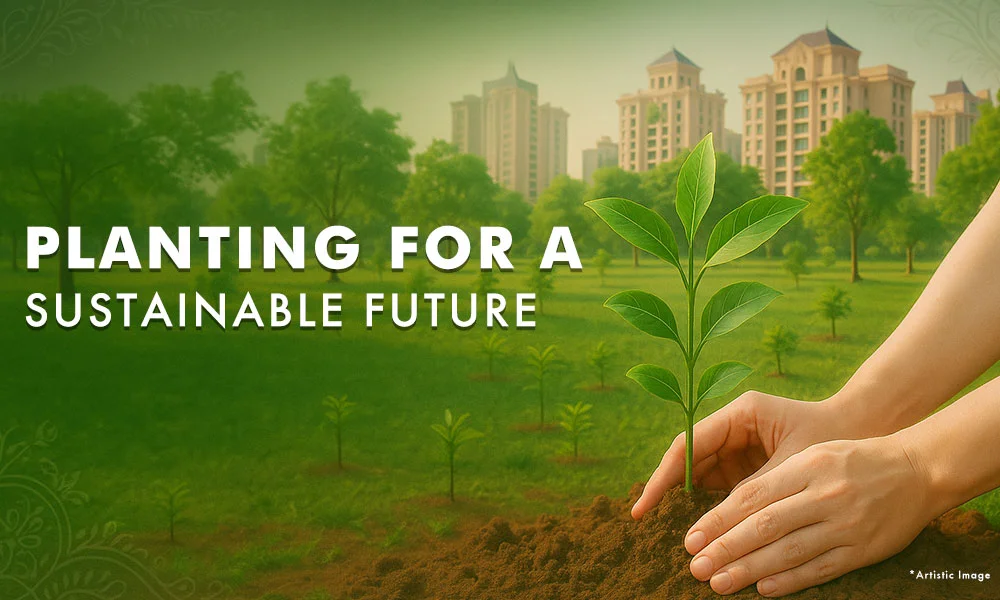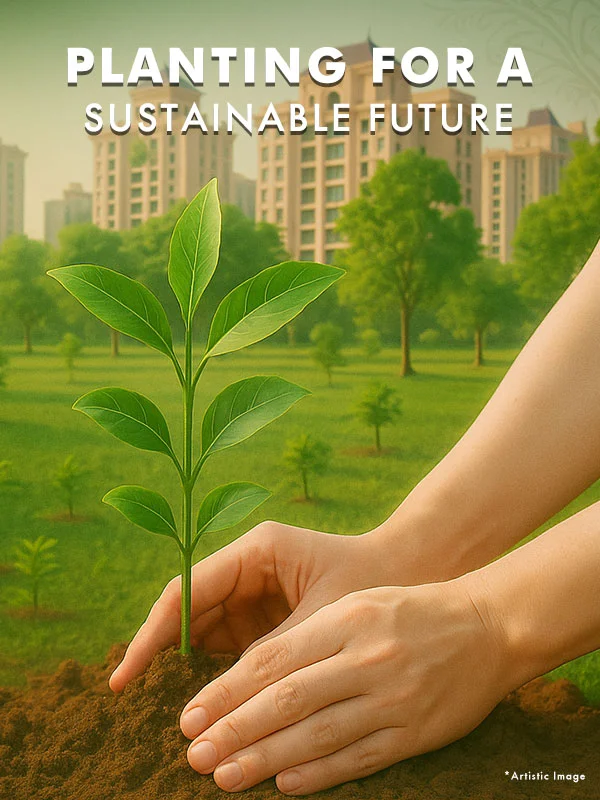Afforestation and Its Impact on Sustainable Urban Ecosystems
In the ever-accelerating race toward urbanization, cities are losing their green lungs. But at Hiranandani Gardens, Powai, we envisioned a different future, a future where glass and concrete could coexist with green hills and fresh air. Our afforestation initiative on the Powai hill is a living example of this vision, a regenerative leap towards sustainable urban development in the heart of Mumbai.
Why Afforestation Matters in Urban India
Urban afforestation is not just about tree-planting; it's about reviving ecosystems, enhancing urban resilience, and restoring our deep-rooted connection with nature. In today's concrete-heavy metros, green spaces offer more than just visual relief; they clean the air, cool the environment, and uplift the collective well-being of communities.
The 25-acre Powai Hill afforestation project was born out of this philosophy. What was once barren, rocky terrain is now a thriving green forest ecosystem with over 1,00,000 native trees carefully planted, nurtured, and protected.
The Genesis of Powai's Urban Forest
When we began developing Hiranandani Gardens in the early 1990s, Powai was far from the urban landmark it is today. Our hilltop terrain was dry and underutilized. But I believed that any successful township must include nature as a stakeholder. That belief drove us to reimagine the hill not as a challenge, but as a canvas for ecological restoration.
We launched a focused urban afforestation drive, one that would transform this land into a self-sustaining ecosystem. Decades later, the results speak for themselves: birdsong greets residents each morning, monsoon rain enriches the soil, and families stroll under leafy canopies—a city forest born from intention.
Our Sustainable Afforestation Model: Nature by Design
Afforestation at Hiranandani is not incidental but intentional. Here's how we approached it:
1. Native and Drought-Resistant Flora
We curated a diverse mix of native species like:
- Ficus religiosa (Pimpal), Ficus benghalensis (Wad) – to attract birds and aid biodiversity.
- Cassia fistula (Bahava), Bauhinia variegata (Kanchan) – for their vibrant seasonal blooms.
- Bombax ceiba (Kate Savar), Trema orientalis (Charcoal Tree) – for agroforestry and soil health.
- Oroxylum indicum (Tetu) and Gmelina arborea (Shivan) – conservation-priority species listed by the IUCN.
This mix was chosen not just for aesthetics but for pollinator support, soil enrichment, and ecological compatibility.
2. Layered Green Architecture
We mimicked the structure of natural forests, layering tall canopy trees with mid-level shrubs and ground covers. This created cooler micro climates and natural habitats for birds, bees, and butterflies.
3. Smart Soil & Water Practices
Urban soil is often nutrient-depleted. We enriched it using compost, bio-fertilizers, and organic mulch. Our drip irrigation systems and rain guns ensure water efficiency and plant health throughout the seasons.
4. Weather-Aligned Planting Cycles
Our afforestation strategy aligns with Mumbai's climatic rhythms—especially the pre-monsoon planting season—to maximize sapling survival and minimize water stress.
5. Community Engagement
Afforestation thrives when it's people-driven. Our residents, school students, and NGOs have all played a role, participating in tree plantation drives, green care campaigns, and adopt-a-tree initiatives.
The Measurable Impact of Powai Hill Afforestation
Environmental Impact
- Reduction in carbon emissions through increased carbon sequestration.
- Cooling effect to counter the urban heat island phenomenon.
- Enhanced biodiversity, including migratory birds and rare pollinators.
Social & Health Impact
- Mental wellness through access to calm green spaces.
- Cleaner air and improved microclimate across the township.
- Aesthetic upliftment and civic pride among residents.
A Living Legacy for Future Generations
This hill forest is not just a green zone—it is a symbol of long-term stewardship. Every tree stands as a testament to our commitment to climate-positive urbanism. More than a township feature, it's a philosophy that we carry forward in all our developments—from Powai to Panvel and beyond.
Conclusion: Where Concrete Meets Canopy
Urban transformation doesn't have to mean ecological sacrifice. At Hiranandani Gardens, Powai, we've shown that development and afforestation can go hand-in-hand. The hill forest today is more than a green patch—it's a breathing, thriving legacy rooted in vision and nurtured with care.
As cities expand and climate challenges intensify, let's remember: the cities of the future will not just be smart, they will need to be green.



